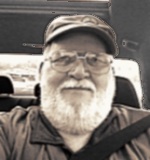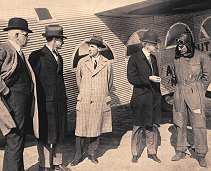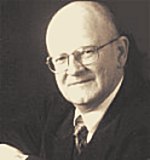|
Tri-Motor History
It started with Mr. William B. Stout, genius, inventor, promoter, and the
guiding influence behind the development of the Ford Tri-Motor and Stout Air
Lines. The actual start point would be the 2-AT single engine all-metal
transport but the 2-AT itself began with the earlier Stour 1-AS (Air Sedan)
flown for the first time on 17 Feb 1923. Mr. Ford put forward an idea to Mr.
Stout of starting an experimental air freight line between Dearborn, Mi and
Chicago, Il. Ford Air Freight became operational on 13 April 1925 using 2-AT
aircraft. All metal construction coupled with the cantilever wing were a
wining design. In July 1925, Ford Motor Company purchased Stout Metal Plane
Company and all its designs and inventory. Mr. Harold Hicks replaced Bill
Stout as chief engineer. A fire destroyed the 3-AT and the factory on 17 Jan
1926.

A new larger building was built and work proceeded on the 4-AT. The
4-AT was test flown on 11 June 1926. Note: the 4-AT was designed & built in
a very short time, about four months! Production of the 4-AT was a total of
seventy eight (78) aircraft. The total production of the 5-AT models was one
hundred and sixteen (116) for a grand total of 194 4-AT/5-AT aircraft.

Project Sponsor:
Mr Edward C. Moore is the Project Researcher/Sponsor for this project.

Mr Moore out hunting for more aircraft and doing
research for the project
Mr Moore has expended many thousands of dollars on this project and has
graciously gifted the entire collection to the simming community for their
flight sim pleasure.

Mr Moore is a 22 year veteran of the US Navy with a long and varied interest
in Flight Simulation. This project started off with some intentions to fill
a void for the Ford Tri-Motor but soon grew into an obsession to portray
this aircraft as a true contributor to global aviation history that she so
admirably achieved. Mr Moore is also responsible for the hundreds of hours
of research invested into this project.
Owner
of the following sites:
http://www.ford-tri-motor.net
http://www.ford-tri-motor.com
|
An additional five misc. tri-motor aircraft were produced
for a grand total of 199 Ford Tri-Motor aircraft of all models.

Why so many from so few aircraft produced?
Well, the Fords had a second life in the cargo field way beyond the intended
life span of the aircraft. TACA specifically in Central America had great
success with Fords as cargo carriers!!! They were flying in Mexico into the
early 1950s and 1960s.

Some aircraft were crashed more than once and rebuilt at the Ford factory
and started over as almost NEW aircraft! Many of the aircraft had ten,
twelve or even fifteen different owners/operators. So having three hundred
is rather easy thing to do (smile).

One unexpected factor about the long service life of many of the Ford
Tri-Motor was due to its out and out success, airlines would bring the
aircraft back to the factory to be serviced with over 2000 or 3000 hours on
them and Ford had only considered that they would last 1000 to 1200 hours -
the airlines would then continue flying the rebuilt Fords for another 3000
hours or so and the old girls would just keep flying until crashed or blown
over by high ground winds....weird!




Click on image for larger view
Photo shows left to right: William B. Mayo, head
engineer of the Ford Motor Company; W.C. Stout, head of the Stout Metal
Airplane Company; Edsel Ford; Henry Ford; and pilot Hamilton.


An Edward C. Moore Project |
Bonus Pack
Due to the considerable research undertaken by myself and Garry on the Ford
Tri-Motor we had a lot of left over ideas and some of those just had to be
done! Therefore another sixty-four repaints were added on but as a seperate
BONUS PACK - a few were actual FORD repaints but most were fiction, fantasy
and special liveries of non-Ford aircraft but they were tri-motors and
carried about the same passenger load and had an equal flight range.

The focus was in areas like: INDIA,, EAST EUROPE AFRICA, AUSTRALIA, and
other forgotten areas. Included free city of Danzig, Iceland, Manchuria,
Japan, Egypt, Algeria (French colony), Angola (Portugal colony), Belgian
Congo (colony of Belgian), and the Baltic countries. Even a joint airline of
Germany and Russia! The aircraft were not Fords but the dates, places and
registration numbers are real, as are the airlines.



Project Artist:
Mr Garry J. Smith is the
Project Artist, web development
& Aircraft Textures and Scenery.

Mr Smith Flight Sim Graphics developer since 1998 and owner
of GJSmith.net
Mr Smith has worked on this project with Mr Moore since February
2011.
He is also a military veteran with 20 years in the RAAF. Mr Smith has been
developing graphics for flight simulation since the inception of Microsoft's
FS98 and has been providing flight sim graphics and scenery since 1998. He
has achieved many awards and considerable recognition for his artwork and
continues to provide FREE downloads from his web site.

Feel free to click on the above link and check out the thousands of other
things available for free from his site.

www.gjsmith.net
www.gjsmith.com
www.gjsmith.org |
